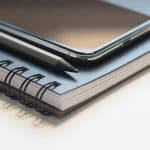Writing a technical essay is a must in academia, especially if you study technical-related disciplines. Any experienced writing helper from EssayHub will agree that essays are essential to strengthen one’s writing, analytical, critical thinking, and decision-making abilities. They also help follow and complete instructions, produce text within the required word count, and, most importantly, carry out research and submit works on time. But even though numerous guides on writing a technical paper on the Internet exist, students keep facing difficulties. It was the main reason this article emerged. Prolific and expert writers from an essay writing service called essayshark.com shared their valuable knowledge on how to write and review a technical paper.
A technical essay: definition
Before delving into the tips, it would be reasonable to provide a universal definition on a technical essay. A technical paper is an article that describes a new methodology or presents results from new approaches, techniques, and sources. A technical essay should be under 3,000 words with a limited number of figures and tables. Such a paper comprises:
A research paper is often confused with a technical report. Research paper writing describes a study with an established and precise research question and compelling findings. A research paper’s word count varies, but it is usually up to 4,000 words with over five figures.

Know your topic
Understanding a topic is a must if you want to create a worthwhile technical paper. Needless to say that such essays are challenging. Writers have to learn the problem and interpret it clearly and understandably. Usually, such questions contain keywords that are necessary to know. Look closer at them and try to identify their meaning. For example, keywords can ask you to account for, critically analyze, define, enumerate, review, summarize, etc. When you find them and know what they require, you can start brainstorming ideas to rest on your paper.
If you are interested in starting as a freelance writer, this guide by Eleven will cover all the necessary points that you need to consider before you start your work.
Go after clearness
Your primary goal is to have an impact on the reader. Your ideas and concepts must shed light on the topic and make the audience appreciate your thoughts. But it is hard to accomplish this if you have a vague message. First off, examine and evaluate your audience. Who is going to read your paper? Who would be interested in it? What are their backgrounds, ages, beliefs, and expectations? Once you perform profiling, you will have a brief idea of what points you have to follow to handle the paper.
The best way to come up with substantial ideas is to use brainstorming techniques. They aim to flex your brain muscles and develop unique and outside-the-box approaches to increase your paper’s educational value. A dozen brainstorming methods exist these days, so you are free to choose any model you like. For instance, a mind mapping technique is for more creative people. In contrast, clustering and freewriting are for those who prefer to get things done quickly and effectively.
Include authoritative thoughts
Once you understand the topic and put some ideas on paper, it is time to research. Researching plays an integral part in writing any academic paper. The point of researching is to boost your competence on the topic as well as make an essay and its ideas valid and scholarly proven. Depending on a topic, you might look for different sources in various places. The most reliable online web pages are Google Scholar, JSTOR, Research Gate, and, of course, libraries and websites that end with .edu and .gov. As to the number of sources included in the paper, check the instructions. If the latter doesn’t have any information on that, estimate one or two authoritative sources per academic page.
Outline and draft your paper
The next step is to construct a plan and create the paper’s first version. An outline is a helpful tool in every writer’s hands. It serves as a roadmap and helps a person remain organized and avoid adding additional and redundant information during the writing process. Outlines don’t have one established structure, meaning they can be written in various forms. The essential point is to make it concise and informative. For instance, you can dedicate several sentences for each section to help you follow the flow of ideas.
Drafting is another vital step that requires nothing but creating a rough version of an essay. Start writing the paper without paying attention to possible typos and mistakes. This draft will help cast light on what your paper will look like in the long run in terms of content, structure, and format. Also, since people tend to miss mistakes in their own writing, it would be reasonable to leave the work aside and take a break, preferably a long one.
Perfect an essay
Return to your paper, read it from the very beginning and highlight every word, phrase, or structure that doesn’t seem naturally embedded in the text. You can read the paper aloud to double the effect of editing and proofreading. Correct your mistakes, and read the document once again. If you can, reach out to your colleagues or peers and ask them to walk through your work. Also, ask them to summarize it. If they provide critical ideas you initially wanted to convey, you have done a tremendous job.
The bottom line
A technical paper is an essay of up to 3,000 words describing a technical process, progress, or results. It sticks to a determined structure and format. If you are assigned to write a technical essay, analyze and understand the topic and keyword. Knowing them will speed up your writing process and increase the quality of a final document. Also, consider following other tips mentioned above to generate a terrific paper promptly.










